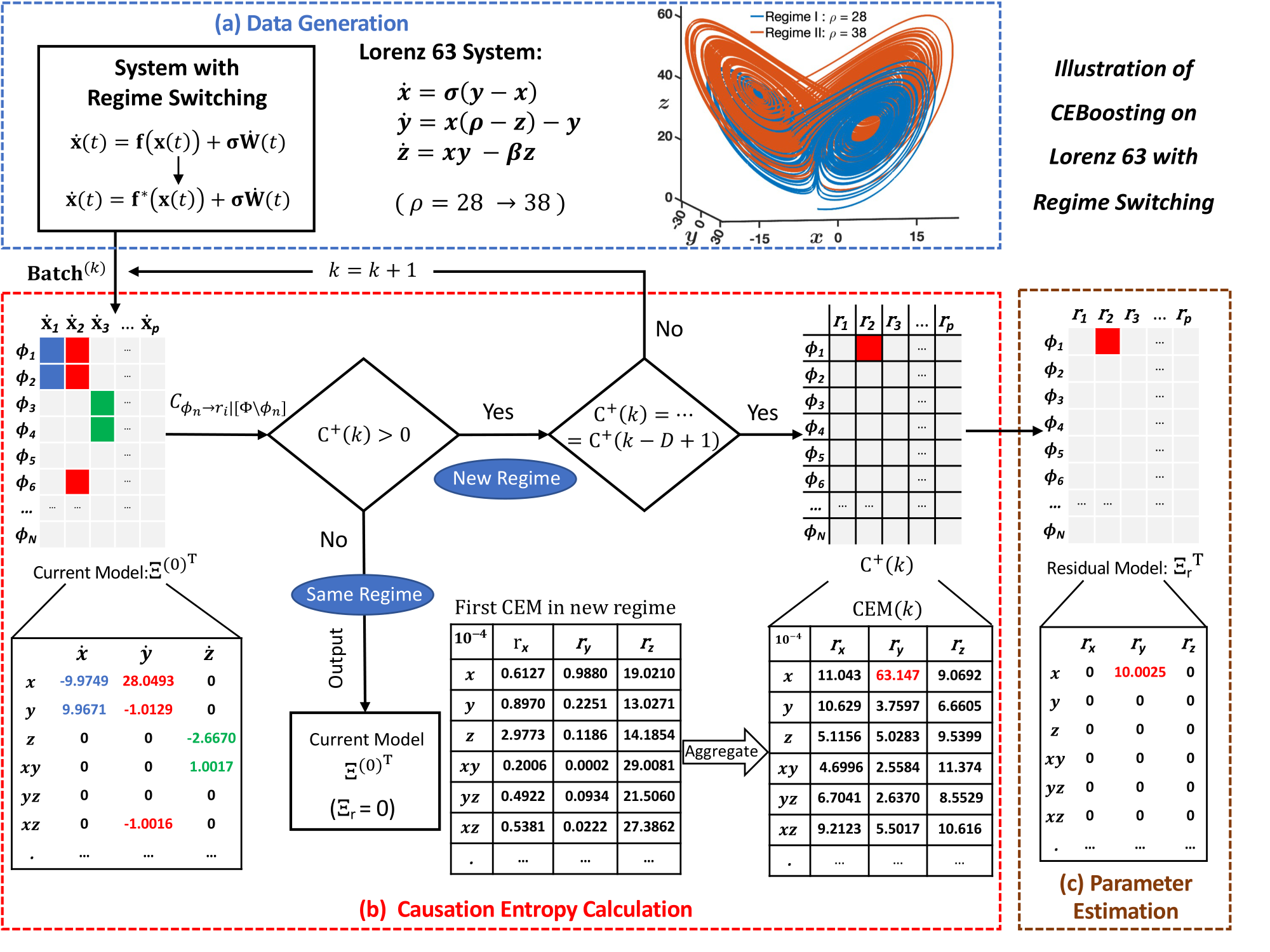CEBoosting: Online Sparse Identification of Dynamical Systems with Regime Switching by Causation Entropy Boosting
Regime switching is ubiquitous in many complex dynamical systems with multiscale features, chaotic behavior, and extreme events. In this paper, a causation entropy boosting (CEBoosting) strategy is developed to facilitate the detection of regime switching and the discovery of the dynamics associated with the new regime via online model identification. The causation entropy, which can be efficiently calculated, provides a logic value of each candidate function in a pre-determined library. The reversal of one or a few such causation entropy indicators associated with the model calibrated for the current regime implies the detection of regime switching. Despite the short length of each batch formed by the sequential data, the accumulated value of causation entropy corresponding to a sequence of data batches leads to a robust indicator. With the detected rectification of the model structure, the subsequent parameter estimation becomes a quadratic optimization problem, which is solved using closed analytic formulae. Using the Lorenz 96 model, it is shown that the causation entropy indicator can be efficiently calculated, and the method applies to moderately large dimensional systems. The CEBoosting algorithm is also adaptive to the situation with partial observations. It is shown via a stochastic parameterized model that the CEBoosting strategy can be combined with data assimilation to identify regime switching triggered by the unobserved latent processes. In addition, the CEBoosting method is applied to a nonlinear paradigm model for topographic mean flow interaction, demonstrating the online detection of regime switching in the presence of strong intermittency and extreme events.
PDF Abstract